MARKET OVERVIEW
There will be continuous molding in neonatal care from the demand for new high-tech health solutions for caring for newborns from the Global Hospital Baby Bassinets market and its industry. Hospitals are under renovation orare modifying their facilities to adapt to new medical standards, and it is at this time that baby bassinet for infant safety and comfort will gain credibility. The industry's response would not be just to technological breakthroughs but also to increased advocacy for infection control, sustainability, and patient-centric health care.
Baby bassinets hold a major status in hospital equipment of the maternity wards thus ensuring proper maximum care for newborns during the very first days outside the womb. Traditionally, it was those old designs that ruled the healthcare arena; however, forward-going innovations can be looked upon to give rise to a new genus of classy models with smart monitoring, antimicrobial materials, and ergonomic enhancements blended with the designs. The demand for bassinets that align with evolving healthcare protocols would encourage manufacturers to try new materials and intelligent features that increase functionality and hygiene.
The Global Hospital Baby Bassinets market will soon put technology and medical advancement at a crossroads. Smart bassinets fitted with temperature adjustment features, real-time monitoring equipment, and automatic adjustments in coherence with the needs of newborns are bound to redefine how neonatal care is perceived. Hospitals will need to seek out such bassinet solutions, which allow newborns to move seamlessly between different departments while in a controlled and safe environment.
Hygiene will keep on being at the heart of every hospital setting, thus inspiring the design of baby bassinets with antimicrobial-coated, easily cleanable surfaces. Infection prevention protocols will be the guiding light in material choice, moving from porous, allergenic nature materials toward non-porous, hypo-allergenic materials that minimize the growth of bacteria. Healthcare institutions will also prefer baby beds that could be easily disinfected in the shortest possible time, therefore ensuring patient safety at the same time maintaining high operational efficiency.
The Sustainable nature would redirect the path of the Global Hospital Baby Bassinets market, as hospitals would be searching for green baby bassinets, which conform to their green initiatives. Still, there would be a transition toward recyclable and biodegradable materials, thus cutting down the environmental footprint on medical equipment. Energy-efficient production methods would also be explored by manufacturers to meet the sustainability objectives without compromising product durability and reliability.
Customization will be the hallmark trend that will characterize hospital demands for baby cradles, which will be further complemented by height increases and storage compartments hidden inside these units that can lead to better modular designs. Their personal nature allows the bassinet to be fitted with additional safety features or specialty attachments that further meet the diverse needs of neonatal health care units.
Heavily defining the future would be the regulations that are now being imposed by healthcare authorities in order to ensure more infant safety. This means that manufacturers will keep their products in compliance with extremely strict medical standards and have them equipped with features that enhance ease of use, accessibility, and durability; otherwise, such products will not be acquired by most hospitals since the conditions will keep changing.
Evolving will be this Global Hospital Baby Bassinets market. There soon will be more and more healthcare facilities making provisions for their newborns' safety, infection control, and sustainability measures. Advancements in medical technology will surely give new defining standards in neonatology in integrating smart features and eco-friendly materials in the care of newborns. The world would continue to see innovations and regulatory adaptations to ensure that enhanced comfort, safety, and efficiency are delivered in the hospitals.
Global Hospital Baby Bassinets market is estimated to reach $2,604.70 Million by 2032; growing at a CAGR of 8.3% from 2025 to 2032.
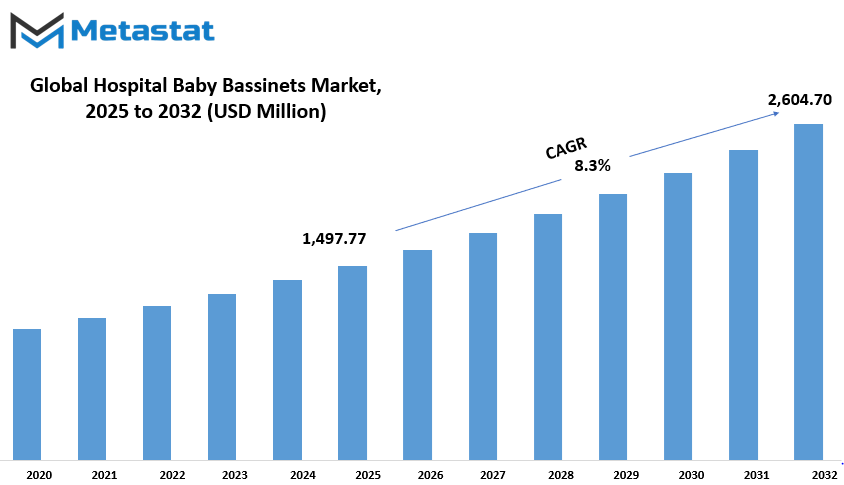
GROWTH FACTORS
The Global Hospital Baby Bassinets market is progressing steadily due to several key drivers. Increased birth rates in many regions of the world are also responsible for the increased demand for quality neonatal care. More hospitals and health care facilities believe there is a need for well-equipped maternity wards so that the newborn could get the best possible care right after birth. The awareness about neonatal health is gaining ground, making hospitals switch to advanced bassinets to offer comfort and safety alongside medical support.
Yet another noteworthy factor fuelling the growth of the market is the continuous upgrade of hospital infrastructure. Healthcare facilities have been upgrading their maternity care services to include contemporary equipment that would enhance patient outcomes. Advanced baby bassinets now being manufactured contain features such as temperature control, adjustable height, and built-in monitoring systems, all essential in neonatal care units. As hospitals focus more on selecting equipment that promotes efficiency and provides safety, this trend will increase the demand for high-quality bassinets.
Yet, even with positive promise, challenges still tendur in the market. One major constraint is the high cost of advanced hospital baby bassinets. Just as beautiful as they are expensive, with features such as integrated monitoring systems, ergonomic design, etc., these bassinets are not within the reach of any hospital, especially those that come from low-income regions. The financial burden can adversely affect the growth of the market, especially in areas fraught with limited healthcare funding. Also, stringent regulatory requirements make it that much harder. Hospital-grade bassinets are placed under stringent safety and quality standards, and this long regulatory umbrella makes it hard for manufacturers to bring new products into the market relatively quickly.
Despite the existing challenges, plenty of significant opportunities lie ahead for the market. The growing demand for smart and ergonomic baby bassinets is an emerging trend worth looking up to. Hospitals and healthcare providers are looking out for bassinets that use technology as a means to improve newborn care. Highly attractive features such as remote monitoring, mobility, and safety are on the wish list. The advancement of technology ensures that manufacturers get to create unique offerings that feed on the above-mentioned evolving needs.
Another significant opportunity is the expansion of healthcare facilities in emerging economies. Many developing countries are heavily investing in the health sector, creating more demand for quality medical equipment. As more hospitals and maternity wards begin to open, the demand for durable and reliable baby bassinets will likely grow. The above-mentioned findings truly provide a healthy outlook for the Global Hospital Baby Bassinets market as its advances improve the industry and neonatal care across the globe.
MARKET SEGMENTATION
By Product Type
The market for Global Hospital Baby Bassinets is expected to grow steadily in the future as new developments take place in the area of healthcare infrastructure as well as increase in demand with respect to neonatal care. Within the aspect, countries are investing in expanding their child care facilities, resulting in an increasing number of modernized baby bassinets. For example, baby bassinets typically provide a safe and comfortable environment for newborns with the ability for healthcare professionals to offer better care and support within their early days.
The different product types that the market includes are broadly classified into the following three types: Standard Baby Bassinets; Convertible Baby Bassinets; and Smart Baby Bassinets. The Standard Baby Bassinets alone account for $764.93 million within the market. The commonest of the three is the Standard Baby Bassinets. Not highly sophisticated, yet easily satisfied the minimum requirements of hospitals.
Additional benefits of Convertible Baby Bassinets include their adjustability aspects to cater to different needs. As such, most hospitals looking for units that would last them long haul would prefer to invest in such convertible ones. Lastly, Smart Baby Bassinets are equipped with the latest technology that includes temperature control, automatic rocking actions, and real-time monitoring, which further enhances neonatal care.
Multiple factors have led to increased demand for baby bassinets in hospitals. The very first among them is increased birth rates in most regions, leading to hospital admissions of more newborns. Another thing is that hospitals are focusing more on patient safety and comfort, end up spending more money on baby-friendly neonatal care systems. The new technology has had an impact on the emerging market, with more health care facilities getting bassinets incorporating monitoring systems to track vital signs of a newborn baby.
The market is already being energized by several government initiatives and regulations for enhanced neonatal care. Guidelines have been set up in most of the countries that require hospitals to grade the level of their infant care should be enhanced; such laws may act as a driver toward the adoption of these new models of bassinettes. Moreover, the increased healthcare expenditures in the developing countries have enabled the hospitals to renovate their maternity wards using much sophisticated equipment and resources.
Nonetheless, growing optimism is overshadowed by obvious challenges. The cost of such advanced baby bassinets would be a limiting factor for many of the smaller hospitals because they cannot afford it. Constant investments are called for in order to ensure the maintenance and upgrades necessary by many hospitals, and as such, not always feasible. Ongoing research and development in neonatal care equipment will come up with even more cost-effective solutions in the near future, creating a wider market scope for these bassinets.
Holding true for this segment of care is that as infant care becomes more and more emphasized in hospitals, so will the demand for such hospital baby bassinet grow. With much promise on the technology frontier, along with supportive healthcare policies, this market continues to shape itself so that newborns receive the best possible care from their first moments in the world.
By Material
The classification of Global Hospital Baby Bassinets Market includes metal, plastic, wood, and other categories depending on the making materials. It is a basic need that the hospital should place the baby in a bassinet wherein the child can feel comfortable and safe inside. Considering the materials used, durability, maintenance, and overall functionality differ in the final point that considers making it a question for the healthcare facility before placing an order for the baby bassinet.
Metal has remained as a north star in the constellation of uses in hospitals and is being molded into various shapes like that of a bassinet. It is very strong and durable, not easily torn or worn. Therefore, their application is compounded in that they are also used for a long time in hospitals. Further, metal objects are easy to clean and ensure hygiene in medical places. But this might be heavy with respect to other materials, so they restrict mobility. However, this strict structure makes metal bassinets a prime preference in many healthcare institutions.
The lightweight costs are affordable alternatives to plastic, which are easy to move, an advantage to the movement of the hospital personnel. They have a smooth surface, making it easy to clean and disinfect them, very necessary- although not as strong as metal, after a long time of use, the wear on it makes it lose its emirates life span. Still, it is inexpensive, easy to handle; thus, a lot of hospitals offer plastic bassinets.
Wooden bassinet - not so commonly used, giving a warm and natural aesthetic. Some hospitals usually prefer this because it gives a conventional look and stability for them. Maintenance is, however, a little difficult, being that wood is susceptible to moisture damage and damage from cleaning chemicals. Proper care is needed to keep it durable, and some healthcare facilities might go for treated wood to have more resistance to external factors.
These primary materials don't have to preclude the fab bassinet made out of a combination of materials or even some other substances. It can include engineered wood, reinforced plastic, or hybrid designs altogether for added functionalities. The kind of combination selected by hospitals would largely depend on the use they want for maximum durability, easy cleaning, or cost-effective options.
New Emerging Fields in Healthcare and Rising Fertility Rates Basically Bringing in Demand into Medical Infrastructure Developments Will Fuel or Push Demand for Hospital Baby Bassinets. Medical Facilities Now Aren't Just Stopping at Standards; They're Going to Ensure These Bassinets Are Comfortable for Babies, Safety Having Its Place in the Equipment for Going into Purchase. Thus, Choosing a Material That Matters to Both Aspects-the Short-Time Convenience and Usability at the End of Year.
But as hospitals are still very keen on improving the neonatal environment in said institutions, selecting bassinets will always be needed. The last collection for consideration is whether going for metal, plastic, wood, or any other material, but what the healthcare provider mostly considers- most times being very practical and efficient in hospital operations-with regard to baby care continue to be those that create a safe and comfortable environment for newborns.
By End-User
Growing higher birth rates and increasing demand for neonatal care contribute to the flourishing growth of the Global Hospital Baby Bassinets market. Bassinets for babies are a very important part of the medical sector; they provide a safe and comfortable place for newborns in the early days of their admission in any medical establishment. Therefore, these bassinets are manufactured to provide convenience for the health workers as well as the parents while keeping the baby safe. On the other hand, whereby hospitals, maternity centers, neonatal intensive care units, etc., require baby hospital cots to assist in hygiene, mobility, and easy access to handling newborns.
Awareness regarding infant safety and specialized neonatal care is another strong driver for market growth. Medical facilities are thus turning toward the purchase of quality bassinets that meet the strictest safety regulations for their maternity and neonatal wards. Height-adjustable with wheels and storage for essentials, these bassinets fulfill a critical role in the context of modern healthcare. With the increasing demand for transparent bassinets, it becomes easier for parents and caregivers to monitor the baby while ensuring comfort and safety.
Technological advancements impact the development of baby bassinets as manufacturers integrate several features for increased functionality and convenience. Some new bassinets have built-in temperature control and highly advanced lighting with easy dirt cleaning surfaces for the convenience of infants and caregivers alike. Eco-friendly and non-toxic material is also in great demand for constructing these bassinets, which coincides with the increasing popularity of environmentally-suited healthcare products.
The increasing expansion of maternity hospitals and neonatal intensive care units worldwide is also a factor in pushing the greater demand for baby hospital cots. Investments in healthcare infrastructure, including the establishment of new hospitals and specialized maternity centers, are being carried out in the developing world. These expansions differ in their opportunities for growth for the market, as the medical facility outfit with the current neonatal care products is fast becoming a priority.
Government regulations and safety guidelines have also an effect that is deemed very important in the hospital baby bassinets market. Different regulatory bodies ensure that bassinets meet safety standards to prevent accidental falls, suffocation, or contamination. Therefore, compliance brings into the trust of manufacturers and eventually controls their market presence.
In summary, thus, due to increased demand for infant care solutions, technological innovations, and healthcare investments, the Global Hospital Baby Bassinets market is growing steadily. As hospitals further their causes to improve neonatal care, the demand for high-quality baby bassinins will remain strong in the years to come.
By Distribution Channel
Growing at a steady pace, the world market for Hospital Baby Bassinets is driven by the demand for sophisticated neonatal care equipment. Hospitals are increasingly buying advanced bassinets so that newborn babies should not be compromised on safety or comfort. This bassinet is the mainstay of obstetric ward equipment, offering a safe base for an infant while being assessable to the medical professional and the mother.
Co-activity between the selection of bassinet distribution channels proceeds. Online Stores hold due to the convenience with which these stores bring products. Healthcare providers can view models, compare features, and go through ratings before a purchase is made. Most of the time, online podiums can offer competitive pricing and discounts, thus making them the best selling option for hospitals that try to run a fine budget. The ability to place an order anytime without geographical limitation has made the online platforms have high-strung sales.
On the other hand, offline stores will continue to be an option for consumers who relish a hands-on experience Hospitals generally do not necessarily have to scrutinize the bassinets' quality and durability before deciding if they want them. In a physical store, you can take a closer look at the materials. Furthermore, evaluate stability and seek expert advice from sales representatives. Many healthcare facilities prefer direct talks with vendors so that they can have features customized to their unique needs. Besides immediate availability, buying from offline means obliterating wait times, as opposed to shipping.
The awareness about neonate safety and hygiene standards tends to stimulate manufacturers toward innovation and improvement of the products. Many contemporary bassinets are completed with features such as height flexibility, easy mobility, and enhanced safety barriers. Some are also enabled with a technologically advanced monitoring system to track crucial signs of the baby, offer more safety. These developments enhance the preference for quality bassinets and compel the medical centers to alter their purchasing for superior commodities.
Market expansion has been caused by factors like the rise in birth rate, improvement in the state of health care infrastructure, and government interventions that support maternal and child healthcare. The demand for bassinets does not end with hospitals; birthing centers, maternity clinics, and even home healthcare services would like to have them in their setup to better care for the newborns.
The Hospital Baby Bassinets market is expected to thrive further, bearing into obtaining the best neonatal care through this segment. Modern design and technology keep upgrading the equipment to make Hospital Baby Bassinets the major priority when it comes to consideration in a facility worldwide.
|
Forecast Period |
2025-2032 |
|
Market Size in 2025 |
$1,497.77 million |
|
Market Size by 2032 |
$2,604.70 Million |
|
Growth Rate from 2024 to 2031 |
8.3% |
|
Base Year |
2024 |
|
Regions Covered |
North America, Europe, Asia-Pacific, South America, Middle East & Africa |
REGIONAL ANALYSIS
The global market for Hospital Baby Bassinets encompasses a wide array of aspects influencing the development of hospital baby bassinets such as the advancements in the medical technology, incremented birth rate, and the huge focus on neonatal care. Hospital bassinets are kept to provide the newborns with a safe and comfortable environment and at the same time ensure that they stay as close to their mothers as possible, whether or not they are under the necessary care. Hospitals invest in high-quality bassinetts to improve the care experience and ensure a safe and hygienic environment for newborns.
The global Hospital Baby Bassinets market geography-wise includes North America, Europe, Asia-Pacific, South America, and the Middle East & Africa. North America comprises Canada, Mexico, and the United States. Europe consists of the UK, Germany, France, Italy, and the Rest of Europe. Asia-Pacific consists of countries like India, China, Japan, South Korea, and the Rest of Asia-Pacific called Rest of Asia-Pacific. South America consists of Brazil, Argentina, and the Rest of South America while the Middle East & Africa consist of GCC Countries, Egypt, South Africa, and the Rest of the Middle East & Africa.
North America is a key region due to continuous investments in hospitals towards modern medical equipment such as bassinets. Such safety regulations coupled with increases in birth rates drive demand for this region which has well-established healthcare infrastructure. Purchases of bassinets are also on considerations of infant care that are grounded on stricter adherence to laws of the European Providing Directive. The emphasis therein of Germany and the UK is on modern designs that integrate safety and practicality for practitioners and ease of use for parents in these countries.
Asia-Pacific is one of the most burgeoning markets in terms of increasing birth rates and improving healthcare. Countries such as India and China are increasingly witnessing investment in hospital infrastructure, which escalates demand for bassinets. Another contributor to the growth is Japan and South Korea's focus on modern medical technology. Brazil and Argentina are among the leading nations in healthcare conditions that influence the market in South America. Economic problems in that region have not deterred the continuous improvements in healthcare, which always create a new window for the manufacturers.
The Middle East & North Africa region also drew the attention of hospital planners with enhanced neonatal services. The advanced degree of sophistication in medical infrastructure invested by the GCC countries, specifically, Saudi Arabia and the United Arab Emirates, is wanting to be matched by Egypt and South Africa in order to broaden the access to health services. This growing market in the region is predicted to widen due to future priorities set by the governments for improved medical care for neonates. Finally, it can be appraised that the demand for hospital baby bassinets will arise across the globe with increasing awareness on neonatal health and further development in hospital facilities.
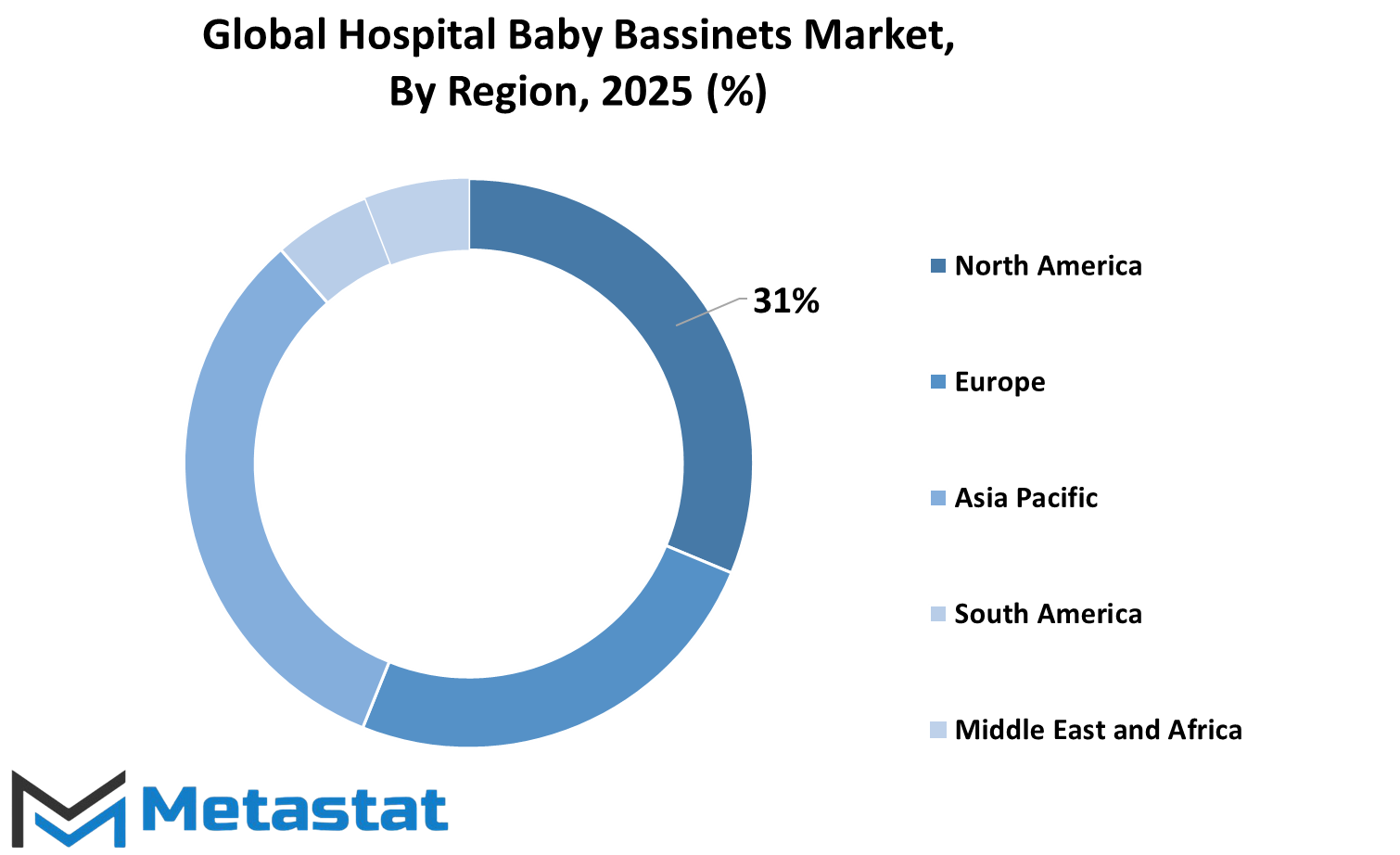
COMPETITIVE PLAYERS
The Global Hospital Baby Bassinets market is focus on establishing a secured environment for an infant along with the comfort in medical facilities. Baby bassinets are designed to give care to the infants while allowing the health care professionals to monitor the baby in an easy way. Many changes have happened over the years because of advances in medical technology, and due to this, the products turned more efficient with easy user-friendly usage. The hospitals and maternity centers take priority to those baby beds that are light-weight, have mobility, and safety enhancement features that indemnify the wellbeing of newborns.
This includes the following: - Accelerating demand of hospital baby-bassinets that can be attributed to the increased birth rates for different reasons across different regions, and also the states have further focused on the steps taken towards better neonatal care. Facilities have been established by the hospitals to meet expanded demands concerning neonatal unit equipping as they want to cater to improved patient outcomes. Infection control has also been one of the major driving forces that increase bassinet availability and usage largely due to easy cleaning and disinfection materials. The other used features that improve bassinet usability include height adjustment, storage space, and lockable wheels, which will be very convenient for both end users-health care providers and parents.
Such factors enjoyed by this market, for instance, are related to those set by regulation and standards to ensure that the bassinet meets applicable safety criteria. Medical equipment manufacturers are on their effort to improve what they call state-of-the-art medical equipment. From transparent walls to see-through wall technology for improved visibility to using ergonomic principles to ease handling, the introduction of new designs has set the wide market adoption of baby bassinets in hospitals. The trend of mother-infant bonding in hospitals has led to the production of baby bassinets designed for safety while caring for the newborn.
The Hospital Baby Bassinets industry is run by key players such as Novum Medical Products, Narang Medical Limited, Delta Children, Pedigo Products, Phoenix Medical Systems Pvt. Ltd., Kay & Company, Nice Neotech Medical Systems Pvt. Ltd., GPC Medical Ltd., Graco Children's Products Inc., DESCO, Fanem Ltda., Universal Medical, Medik, HEMC (Hospital Equipment Manufacturing Company). These are private companies and highly invested in luxury and developing high-quality bassinet features according to modern healthcare needs.
Hospital attachment pays for its share on modern-age advanced bassinets. Researchers have started spending on developing newer variants of smart monitoring systems attached with baby beds. Due to strong national interest in neonatal health, the market is kept germane where hospitals can find bassinet styles that emphasize safety, comfort, and functionality on behalf of a baby and caregiver.
Hospital Baby Bassinets Market Key Segments:
By Product Type
- Standard Baby Bassinets
- Convertible Baby Bassinets
- Smart Baby Bassinets
By Material
- Metal
- Plastic
- Wood
- Others
By End-User
- Hospitals
- Maternity Centers
- Neonatal Intensive Care Units
- Others
By Distribution Channel
- Online Stores
- Offline Stores
Key Global Hospital Baby Bassinets Industry Players
- Novum Medical Products
- Narang Medical Limited
- Delta Children
- Pedigo Products
- Phoenix Medical Systems Pvt. Ltd.
- Kay & Company
- nice Neotech Medical Systems Pvt. Ltd.
- GPC Medical Ltd.
- Graco Children’s Products Inc.
- DESCO
- Fanem Ltda.
- Universal Medical
- Medik
- HEMC (Hospital Equipment Manufacturing Company)
WHAT REPORT PROVIDES
- Full in-depth analysis of the parent Industry
- Important changes in market and its dynamics
- Segmentation details of the market
- Former, on-going, and projected market analysis in terms of volume and value
- Assessment of niche industry developments
- Market share analysis
- Key strategies of major players
- Emerging segments and regional growth potential



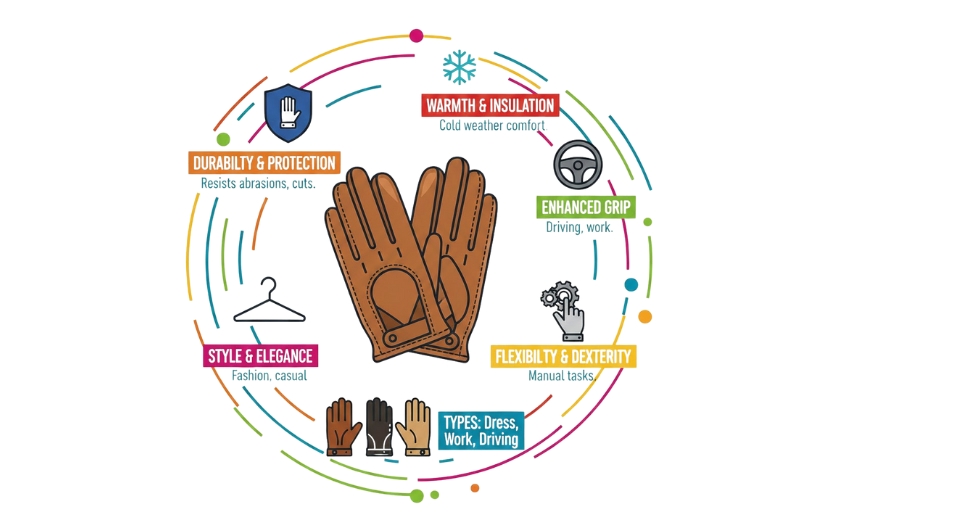
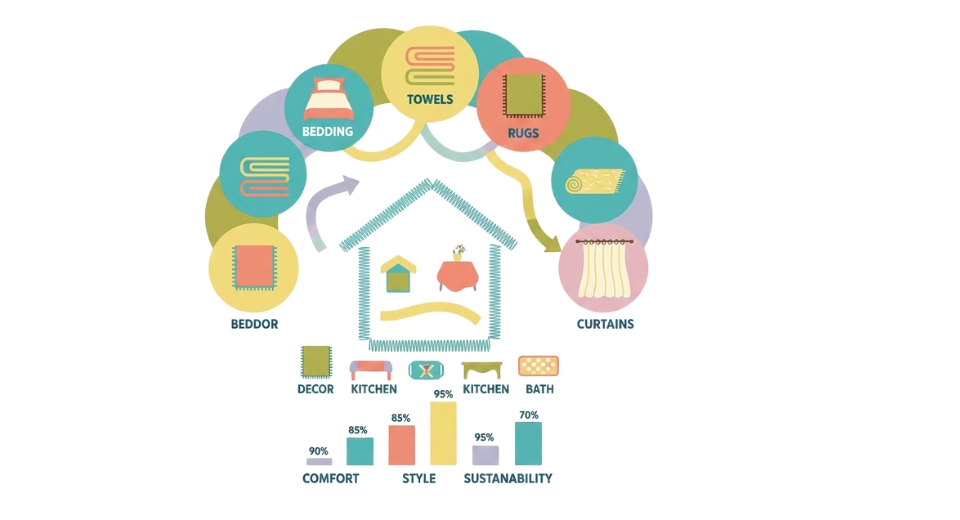
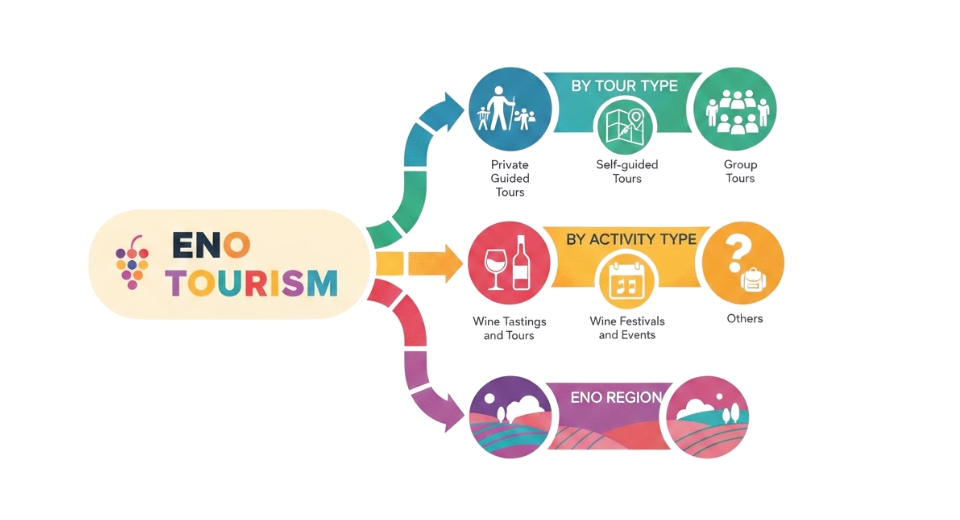
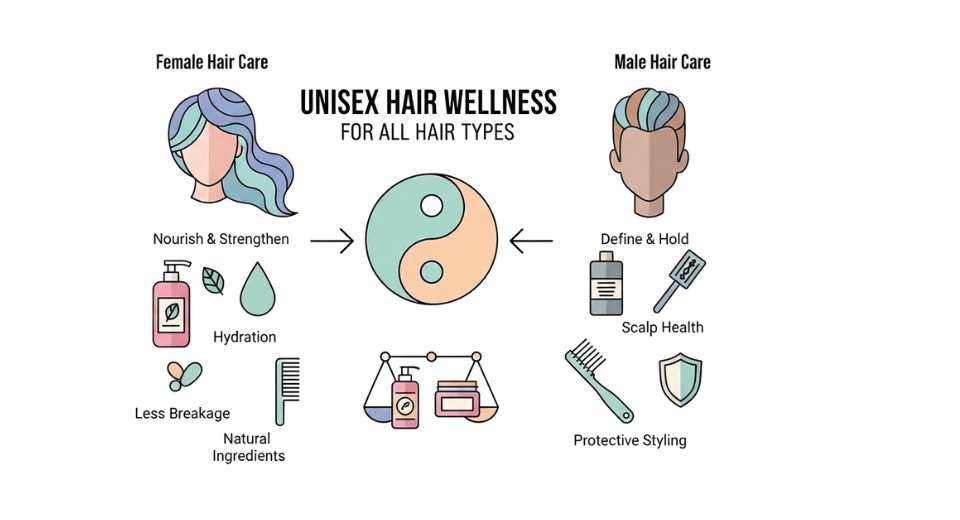

 US: +1 3023308252
US: +1 3023308252






